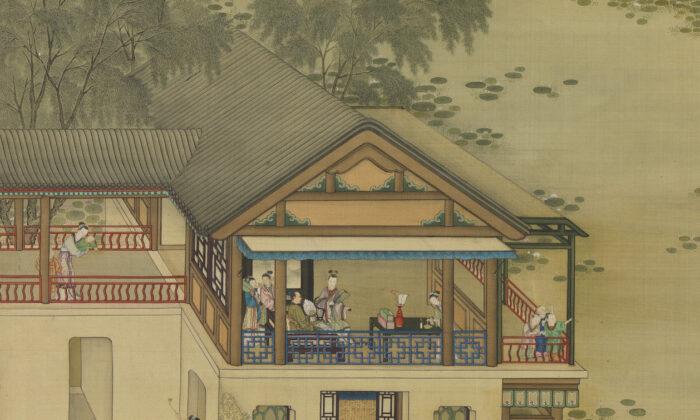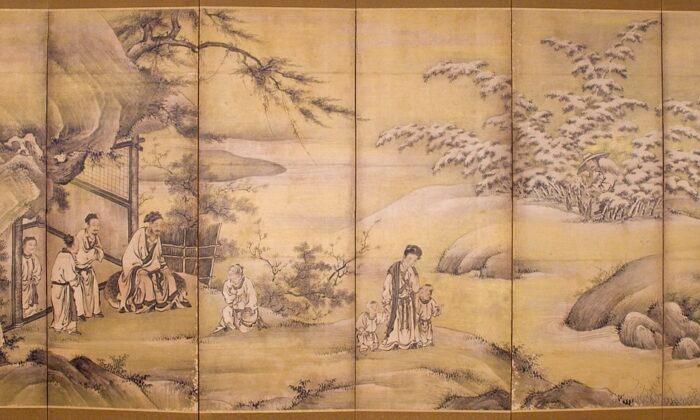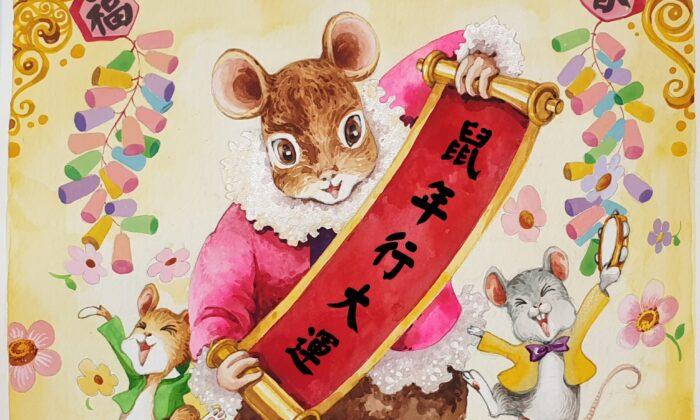Lao Zi (老子) is venerated as a saint and a great philosopher in China. He is regarded as the founder of the Dao School (道家, pronounced dào jiā), the philosophical tradition of Daoism.
Dao (道) means the “Way,” referring the “Way of Heaven,” or the right or proper path. It is also written as Tao.
It is commonly recognized among scholars that Lao Zi lived around 571–470 B.C. and was a contemporary of Chinese philosopher Confucius (孔子) (551-479 B.C.).
Chinese culture is said to have begun over 5,000 years ago with the Yellow Emperor—Huang Di (黄帝), who was a cultivator of Dao and had great power and wisdom.
Lao Zi systemized Daoist thought about 2,500 years ago. His teachings are contained in the “Dao De Jing,” also called “Tao Te Ching” (道德經), or “The Classic of Dao and Virtue.”
The classic, which consists of 81 chapters, uses concise verses and vivid expressions to discuss the meaning of Dao and its manifestation in virtue, or de (德, pronounced dé).
Lao Zi believed that Dao is the root and creator of all things, and that virtue is the foundation of Dao; it is behaviour that adheres to the Dao—sincere morality and manifestation of good deeds.
The essence of his teachings is to honour the Dao, value and aspire to virtue, and do so not due to command but spontaneously and naturally.
Imparting the Dao
Lao Zi’s family name was Li (李), while his given name was Er (耳). The name Lao Zi, literally “Old Master,” is an honorific title. “Lao” means old age and great virtue, while “zi” is a laudatory way of addressing a man or a “master” in ancient China.Lao Zi was born during the Spring and Autumn Period (770–476 B.C.) of the Eastern Zhou, in the later part of the Zhou Dynasty (周朝) (approximately from the 11th century B.C. to 221 B.C.).
Some legends say he was born with white hair and this is why he came to be known as Lao Zi. Legends also say he was endowed with extraordinary natural abilities.
He lived in the capital of Zhou for a long time and was the curator of the imperial library and archives. He was familiar with ceremonial systems and had extensive knowledge of nature.
While the earlier Western Zhou (until 771 B.C.) saw great peace and unity, the Eastern Zhou (770–221 B.C.) was characterized by fragmentation and war.
Lao Zi witnessed the decline of the Zhou. In 520 B.C., he was dismissed from his position after being implicated in a power struggle among Zhou officials. Deeply feeling the evilness of the human world, he obscured his identity and began a life of wandering.
According to legend, when Lao Zi reached the border of the Zhou empire to cross into the northwestern regions, the border official saw a purple aura rising in the east, foretelling the arrival of a saint. He then saw Lao Zi approaching on a green water buffalo.
Following What is Natural
Lao Zi pointed out that the source of good fortune—virtue—and the source of bad fortune—a result of committing wrongdoing—are mutually transformable; good fortune can turn into bad, and vice versa, under certain circumstances.To guard against losing virtue, Lao Zi taught people to follow the course of nature and have no intent, as even something that looks like a good deed may turn out to be wrongdoing.
By having no intent, practising what is called wuwei (無為), or non-action, one avoids committing wrongdoing and thus will not lose virtue.
Loss of Innocent Nature
Lao Zi stated that societal developments led to people’s pursuit of fame and profit at the expense of virtue, and people lost their innocent nature.The disappearance of kindness, righteousness, filial piety, and loyalty indicated the deterioration of social morality.
Returning to the Origin
To enable people to return to their true nature, Lao Zi disseminated the Dao during a chaotic period.In just 5,000 words, he explained the meaning of the Dao, its relationship to the formation of the universe, and the origin of all things.
Lao Zi discussed how to behave as a human being and how to finally return to one’s original, true self. He provided many examples to explain these main issues, paving the way for people to achieve this final purpose.




